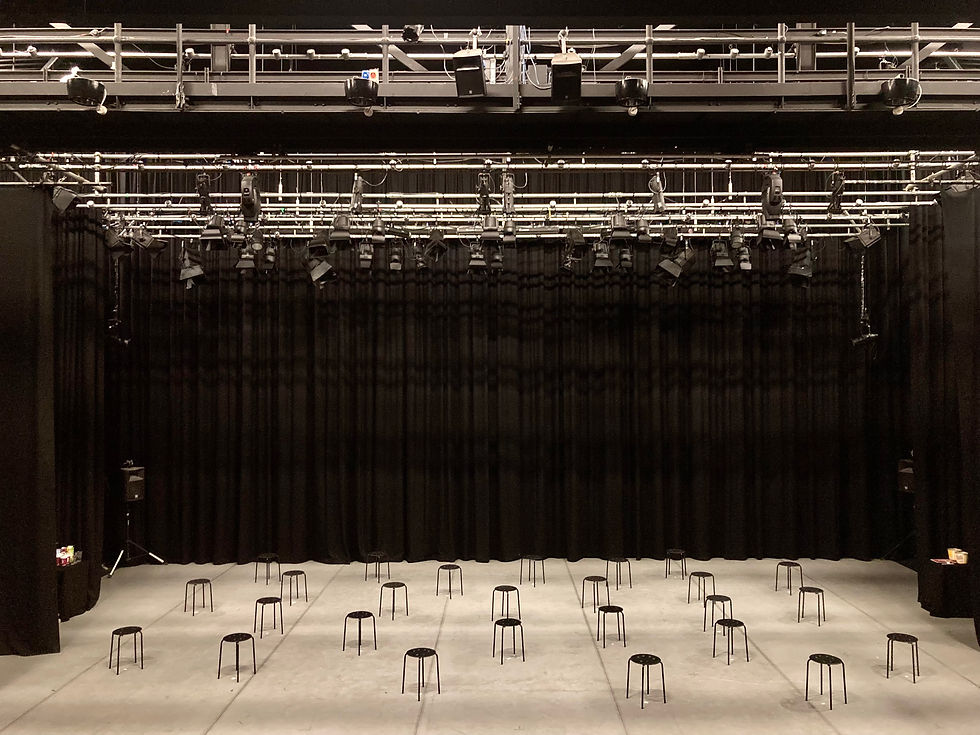Artistic Director training
- Matt Fenton

- Jul 8
- 3 min read
Like others recently, I’ve been thinking about Artistic Director training, especially when related to running theatres and arts buildings.

Artistic leadership is a sort-of profession, for some a kind-of calling. But the routes in are often opaque, and practical training opportunities hard to find (though there is great work from Clore Leadership and coaches like George Perrin). Sometimes it’s a role you just find yourself in, as much as being any kind of clear career choice.
With no formal theatre training, in hindsight I had a slow, informal apprenticeship working in small theatres alongside students and volunteers. Opening up, doing get-ins, running box office (a tin for change, raffle stubs for tickets), staffing the bar, doing press, marketing, community engagement, sweeping up and locking up; and yes, some programming and directing. I liked it all, and it was often physical: unloading vans, shifting bar stock, building sets, unpacking boxes of brochures, putting out chairs, rolling out and taping down dance-floor (heavy bastards, those rolls of dance-floor), and yes, sometimes leading workshops or rehearsals.

Then I ran theatre spaces where there were other people, and eventually whole departments for each of those things. I hopefully knew enough about the needs and frustrations of each role to manage the whole thing, but my own work got less physical. I spent more and more time in meetings, until the job was almost entirely meetings. In the end I missed the physicality of the early days, the work of the work. So I stopped. My income halved, but so did the time I spent in meetings or replying to email. In return I got time, and a more physical practice in rehearsal rooms, on tour, facilitating teams, almost always on my feet. I’m now happily pulled into the familiar tasks of rigging lights, putting out chairs, leading a warm-up. And ironically, I spend more time in an artistic role than when I was an actual Artistic Director.
My dad’s journey was similar – a former builder who entered teaching for the physicality of wood-work, metal-work and car mechanics. And teaching meant doing: cutting, drilling, welding, sawing, plaining, sanding. When the national curriculum put paid to all that, he found himself in classrooms with no equipment, teaching kids to design things with no tools to make them. So he stopped. He became a boat-builder, went back to the physical, and his (our!) income halved. But he had time for the slow work of hand-sanding the hull of a wooden boat with ever-finer sandpaper, adding layer upon layer of varnish until it glowed.

I'm interested in how as artistic leaders we maintain the space for our work as artists and physical beings within the organisations we run. And equally, how the business of running organisations can be more creative, and make better use of the playful, physical and facilitative skills we have as artists.
When I meet young artists who want to be ADs, perhaps because it sounds exciting, or it comes with a heady combination of creativity, deciding stuff and a regular salary, I always want to ask what kind of work they actually like doing. Not what kind of ‘work’ they want to make, what hat they want to wear, or their vision; but what mix of body-work to mind-work would work for them? How will they achieve that balance, and what kinds of physical and mental support will they need to make the work accessible? What will their apprenticeship look like?
You can find out more about our work, including supporting new and established artistic leaders, here: www.fentonmicklem.com

Comments